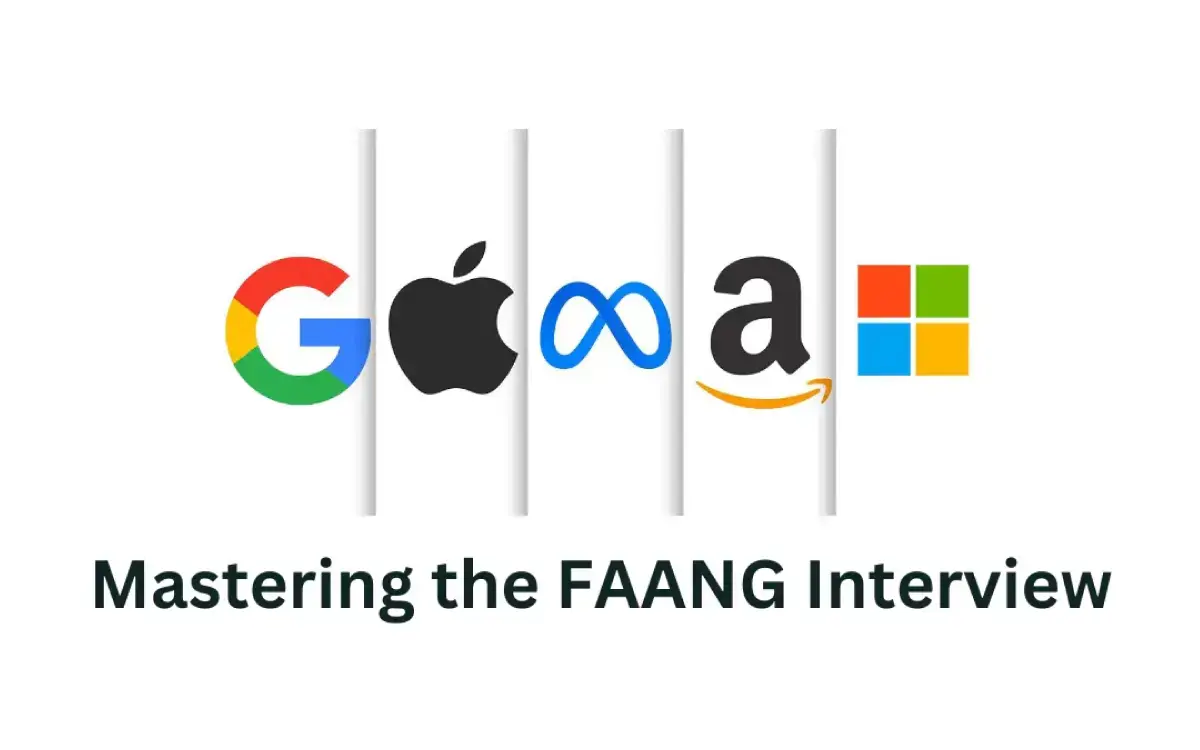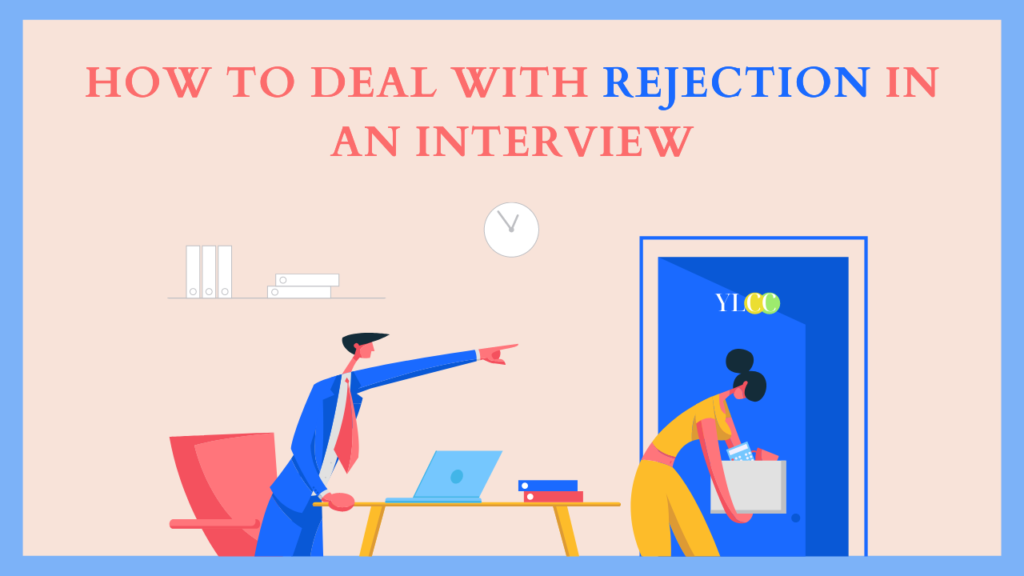1: Introduction: Why FAANG ML Roles Are Different
Machine Learning (ML) engineers are in high demand everywhere, from scrappy startups to Fortune 500s. But when it comes to FAANG companies (Facebook/Meta, Amazon, Apple, Netflix, and Google), the hiring process is on a different level. These companies aren’t just looking for technically competent engineers. They want professionals who can thrive in high-pressure, ambiguous environments and deliver measurable impact at global scale.
For candidates preparing for these interviews, it’s not enough to simply check the boxes on coding ability or machine learning theory. Recruiters at FAANG are searching for something deeper: end-to-end ML engineers who can combine technical expertise, system-level thinking, and strong communication skills to solve complex, real-world problems.
The FAANG Hiring Lens
Recruiters at FAANG are tasked with one of the toughest challenges in the industry: finding engineers who aren’t just great at algorithms, but also adaptable, collaborative, and innovative. Unlike smaller companies where ML roles may be narrowly focused, FAANG companies need engineers who can:
- Design ML systems at scale: Handling millions or billions of users.
- Bridge research and production: Moving ideas from papers to pipelines.
- Communicate across teams: Explaining trade-offs to product managers, data scientists, and executives.
- Demonstrate business impact: Framing ML not as an academic exercise, but as a driver of revenue, engagement, or efficiency.
These expectations form part of the hidden curriculum that catches many candidates by surprise. Bootcamps or even advanced degrees may prepare you for the technical aspects, but recruiters also measure qualities like adaptability, storytelling, and cultural alignment.
Why FAANG ML Roles Are Unique
FAANG interviews are designed to mirror the realities of working at these companies:
- Ambiguity is normal. Requirements are rarely clear-cut; interviewers deliberately test how candidates handle open-ended prompts.
- Scale matters. Your model doesn’t just need to work; it needs to scale globally.
- Collaboration is critical. ML engineers must work with infrastructure teams, product teams, and business stakeholders.
This is why recruiters filter for qualities beyond coding. They want ML engineers who can thrive in this high-stakes ecosystem.
The Pitfall of Over-Focusing on Algorithms
Many candidates believe FAANG interviews are won or lost on LeetCode problems. While coding is crucial, recruiters know it’s only one piece of the puzzle. Time and again, candidates with perfect algorithm prep stumble because they can’t:
- Explain trade-offs clearly.
- Tie their work to real-world outcomes.
- Communicate under pressure.
This is reinforced in Interview Node’s guide on “Why Software Engineers Keep Failing FAANG Interviews”, where the gap isn’t usually knowledge, it’s the ability to perform with structure, clarity, and confidence.
What This Blog Will Cover
In the sections ahead, we’ll break down exactly what FAANG recruiters are really looking for in ML engineers:
- The technical depth that matters most.
- Applied ML skills beyond model training.
- The balance of research and engineering.
- Communication and cultural fit.
- Common misconceptions that derail candidates.
- How to position yourself as the kind of candidate recruiters want to hire.
By the end, you’ll have a clear roadmap not just for acing FAANG interviews, but for becoming the kind of ML engineer these companies are eager to bring onboard.
Key Takeaway
FAANG ML roles demand more than technical know-how. Recruiters are looking for engineers who combine technical excellence with adaptability, communication, and impact orientation. Bootcamps and degrees prepare you for the visible curriculum of coding and theory. To succeed at FAANG, you must also master the hidden curriculum of collaboration, ambiguity, and cultural alignment.
2: Technical Depth: Beyond Just Algorithms
When most candidates start preparing for FAANG ML interviews, their instinct is to head straight to algorithm practice platforms. And while coding interviews remain a critical filter, FAANG recruiters look for far more than just the ability to reverse a linked list or optimize a dynamic programming solution. They want to see deep technical foundations, the kind that allows ML engineers to solve real-world problems at massive scale.
a. Strong Fundamentals in Computer Science
Before even touching ML-specific topics, recruiters expect engineers to have mastery of core CS concepts:
- Data structures and algorithms for efficiency.
- Operating systems and memory management for optimization.
- Concurrency and distributed systems for large-scale engineering.
Why? Because ML doesn’t exist in a vacuum. Deploying models in production requires integrating them into highly complex systems were scalability and efficiency matter just as much as accuracy.
b. Machine Learning Theory: Depth Over Buzzwords
FAANG recruiters are wary of candidates who know frameworks but lack depth. They don’t just want to hear that you “used XGBoost” or “fine-tuned BERT.” They want to know:
- Why did you choose that algorithm?
- How you evaluated its performance.
- What trade-offs you considered.
Key areas they often probe include:
- Bias-variance tradeoff and error analysis.
- Feature engineering and representation learning.
- Regularization techniques and generalization.
- Evaluation metrics for different problem domains.
Recruiters prioritize candidates who can reason about ML, not just apply it.
c. System Design for ML at Scale
One of the biggest differentiators at FAANG is system design. Recruiters want ML engineers who can design pipelines that scale globally, handling terabytes or petabytes of data.
Expect to discuss:
- Data pipelines: ingestion, cleaning, and transformation.
- Model training infrastructure: distributed training, GPUs/TPUs.
- Deployment strategies: A/B testing, shadow launches, rollback strategies.
- Monitoring and maintenance: drift detection, retraining schedules.
Bootcamps rarely cover this level of system integration, but it’s a core signal recruiters use to evaluate candidates for FAANG ML roles.
d. Coding Skill Still Matters, But with Context
Of course, coding remains essential. Recruiters still want engineers who can:
- Write clean, bug-free code under time pressure.
- Use proper abstractions and modular design.
- Optimize for readability as well as efficiency.
But what sets FAANG candidates apart is how they communicate while coding. Recruiters pay close attention to how you explain trade-offs, test edge cases, and handle interviewer hints. Silence, messy code, or defensive behavior often signal unpreparedness.
e. End-to-End Problem Solving
FAANG recruiters look for ML engineers who can take a problem from formulation to deployment. That means:
- Translating vague product goals into measurable ML tasks.
- Choosing the right model and features.
- Building scalable infrastructure.
- Monitoring performance and retraining as needed.
Candidates who only demonstrate siloed knowledge (e.g., “I just tune hyperparameters”) often fall short. Recruiters prioritize those who show holistic technical depth.
f. The Recruiter’s Perspective
When recruiters screen technical depth, they’re not just asking: “Can this person solve a problem?” They’re asking:
- “Can this person solve the right problem at scale?”
- “Do they understand ML well enough to make sound trade-offs?”
- “Can they integrate their technical choices into a larger system with business impact?”
Strong candidates consistently demonstrate they can move fluidly between theory, code, and systems thinking.
Key Takeaway
At FAANG, technical depth isn’t about memorizing algorithms, it’s about demonstrating end-to-end engineering maturity. Recruiters want ML engineers who can combine CS fundamentals, ML theory, and scalable system design into solutions that work in the real world.
If you want to stand out, don’t just practice LeetCode. Learn to reason deeply about machine learning, design pipelines that scale, and communicate your technical decisions clearly. That’s the level of depth FAANG recruiters is really looking for.
3: Applied ML Skills Recruiters Prioritize
Strong coding and theoretical knowledge may get your resume noticed, but what FAANG recruiters really care about is your ability to apply ML in production. They want engineers who don’t just build models, but also understand the entire lifecycle: from data to deployment to monitoring.
Here are the applied ML skills recruiters consistently prioritize.
a. Feature Engineering and Data Mastery
Data is the fuel for ML systems, and FAANG recruiters look for engineers who know how to shape it effectively. Key expectations include:
- Handling missing, noisy, or imbalanced datasets.
- Designing features that capture meaningful signals.
- Applying techniques like embeddings or transformations for high-dimensional data.
Candidates who can discuss how they’ve transformed raw data into usable features stand out. This goes beyond academic knowledge; it shows practical expertise.
b. Model Evaluation and Metrics
Recruiters know accuracy isn’t enough. They expect ML engineers to choose metrics that align with business goals. For example:
- Precision vs. recall in fraud detection.
- Latency vs. throughput in recommendation systems.
- Fairness and bias metrics for sensitive applications.
What matters is contextual judgment: Can you explain why one metric is more important than another, and how that decision impacts users or revenue?
c. Scalability of ML Systems
FAANG operates at a scale few companies ever reach. Recruiters prioritize candidates who understand:
- Distributed training and serving.
- Efficient use of GPUs/TPUs.
- Optimizing pipelines for billions of predictions daily.
It’s not enough to train a model that works. You must show you can make it work at global scale.
d. Deployment and Monitoring
Models degrade. Data drifts. Recruiters look for candidates who understand the realities of production:
- A/B testing before full rollout.
- Shadow deployments to catch failures.
- Continuous monitoring for drift or anomalies.
- Retraining strategies that balance performance with cost.
Being able to speak about monitoring is often the difference between candidates who “know ML” and those who can own ML in production.
e. Cross-Disciplinary Collaboration
Recruiters want engineers who can bridge the gap between research and engineering. That means:
- Translating academic papers into practical models.
- Partnering with data engineers to build pipelines.
- Communicating trade-offs to product managers.
This cross-disciplinary fluency is rare, and one of the biggest signals recruiters use to identify standout ML engineers.
f. Applied ML in Real Use Cases
FAANG recruiters often probe with applied case questions:
- “How would you design a ranking system for search results?”
- “What features would you build for a recommendation engine?”
- “How would you evaluate an ML-powered chatbot?”
These questions test how you balance technical rigor with real-world constraints.
As highlighted in Interview Node’s guide on “Comprehensive Guide to Feature Engineering for ML Interviews”, the ability to reason about practical feature choices and evaluation trade-offs often matters more than recalling obscure algorithm details.
g. Thinking About ML as a Product
Finally, recruiters look for candidates who view ML as part of the product ecosystem. That means understanding not just how to build models, but also:
- How they affect user experience.
- How they tie to business metrics.
- How to ensure they are ethical and unbiased.
This product mindset signals maturity and long-term thinking.
Key Takeaway
Recruiters at FAANG prioritize ML engineers who demonstrate applied skills, the ability to transform messy data into meaningful features, evaluate models with business-driven metrics, deploy at scale, and monitor for drift.
If you want to stand out, prepare to showcase not just how you build models, but how you make them work in production and deliver real-world impact.
4: Research vs. Engineering Balance
One of the most common misconceptions about ML roles at FAANG is that recruiters are only looking for research-level expertise. Many candidates assume they’ll be asked to design new algorithms or prove cutting-edge theorems. While research skills are valuable, FAANG recruiters are ultimately searching for engineers who can bridge research and production.
This balance, knowing when to dive into theory and when to prioritize engineering, is one of the biggest factors recruiters evaluate.
a. Why Balance Matters at FAANG
FAANG companies operate at the intersection of research and engineering. They publish breakthrough papers on transformers, large-scale recommendation systems, and distributed training. At the same time, they need engineers who can:
- Translate these research ideas into scalable, reliable systems.
- Adapt state-of-the-art methods to messy, real-world data.
- Optimize models for latency, cost, and user impact.
Recruiters know that hiring candidates who lean too heavily into research without engineering maturity leads to impractical solutions. On the flip side, candidates who ignore research risk falling behind in innovation.
b. The Recruiter’s Dilemma
When evaluating candidates, recruiters often ask:
- “Can this person apply research in practice?”
- “Do they know enough theory to reason about new approaches?”
- “Will they build systems that are elegant in theory but unusable in production?”
The best candidates demonstrate fluency in both worlds, they can cite a research technique, but also explain how they’d implement it in a production pipeline.
c. Signals Recruiters Look For
FAANG recruiters screen for balance using:
- Interview questions: Open-ended prompts like “How would you adapt a research model for production at scale?”
- Behavioral stories: Describing times when you moved a project from prototype to deployment.
- Trade-off discussions: Showing you understand that accuracy isn’t always the top priority , sometimes latency or interpretability matters more.
d. What Strong Candidates Demonstrate
Successful ML candidates show they can:
- Bridge domains: Understand enough research to make informed choices, but also enough engineering to implement them efficiently.
- Be pragmatic: Explain why a simpler model might be better in production than a more complex one.
- Learn continuously: Stay updated on research while grounded in the realities of engineering.
For example:
- Weak answer: “I’d use the latest transformer model because it’s state-of-the-art.”
- Strong answer: “Transformers could work here, but given latency constraints, I’d prototype with a lighter model. We can later experiment with distillation to balance accuracy and cost.”
This type of reasoning shows recruiters you’re thinking like both a researcher and an engineer.
e. The Bootcamp Blind Spot
Most bootcamps and even some academic programs focus too narrowly:
- Bootcamps: Emphasize application without theory.
- Academia: Emphasizes research without engineering constraints.
FAANG recruiters, however, look for candidates who can synthesize both.
f. Training for Balance
You can prepare for this expectation by:
- Reading research papers but also implementing lightweight prototypes.
- Practicing system design questions that incorporate ML components.
- Discussing trade-offs during interviews, even if not explicitly asked.
This signals to recruiters that you think beyond models and care about the bigger picture.
Key Takeaway
Recruiters at FAANG don’t expect every ML engineer to be a research scientist. What they do expect is balance: someone who respects theory but prioritizes production realities. Candidates who can bridge these two worlds stand out as the kind of engineers FAANG teams actually need.
5: Communication and Collaboration Skills
When candidates think about FAANG ML interviews, they often picture whiteboard algorithms or complex system design prompts. But recruiters are equally focused on something less obvious: how you communicate and collaborate.
At FAANG, ML engineers don’t work in isolation. They collaborate with data scientists, product managers, infrastructure engineers, and even non-technical stakeholders. Recruiters want to see not just whether you can code, but whether you can explain, align, and influence in a team setting.
a. Thinking Aloud
One of the clearest signals recruiters look for is whether you think aloud during technical rounds. Instead of silently coding, strong candidates narrate their reasoning:
- “I’m considering two data structures here, a hash map for speed versus a balanced tree for ordered lookups.”
- “If latency is critical, I’ll trade off some memory to keep operations in O(1).”
Thinking aloud helps interviewers follow your logic, but it also shows that you’ll be easy to collaborate with on real projects.
b. Asking Clarifying Questions
Recruiters notice when candidates pause to ask clarifying questions before diving into a problem. This signals maturity and thoughtfulness:
- “Are we optimizing for accuracy or speed here?”
- “What’s the expected scale of users?”
Instead of guessing, you’re showing you can align requirements with stakeholders, a key collaboration skill.
c. Handling Feedback and Pushback
In interviews, recruiters often push back to test adaptability. They might say:
- “What if the dataset doubles in size?”
- “How would you explain this approach to a non-technical product manager?”
Candidates who respond defensively raise red flags. Strong candidates listen, adapt, and collaborate with the interviewer as if they were already teammates.
d. Explaining Complex Concepts Simply
Recruiters also look for communication skills across disciplines. Can you explain ML trade-offs to non-technical colleagues? For example:
- Weak explanation: “We’ll use regularization to avoid overfitting.”
- Strong explanation: “We’ll simplify the model slightly so it performs better on new data, not just on our training set.”
The second shows you can make ML accessible, a skill recruiters value highly.
e. Team-Oriented Behavioral Signals
Beyond technical rounds, behavioral interviews reveal how you collaborate under real-world conditions. Recruiters look for:
- Stories where you are influenced without authority.
- Examples of resolving conflict or misalignment.
- Evidence of humility and openness to feedback.
These signals tell recruiters whether you’ll strengthen or strain a high-performing FAANG team.
f. Why Bootcamps Miss This Skill
Most bootcamps prepare you for technical questions but don’t emphasize collaboration. As a result, candidates may ace coding rounds but fail to demonstrate the interpersonal skills recruiters are actively screening for.
g. Training for Communication and Collaboration
You can develop these skills by:
- Practicing mock interviews with peers and focusing on narration.
- Asking friends to give you non-technical prompts to explain ML concepts simply.
- Reviewing past projects and framing them as stories of collaboration and impact.
With deliberate practice, you’ll start to sound less like a solo coder and more like the kind of collaborative engineer recruiters want to hire.
Key Takeaway
Recruiters at FAANG don’t just want engineers who solve problems. They want engineers who solve them with others. By thinking aloud, asking clarifying questions, handling pushback gracefully, and explaining concepts clearly, you demonstrate collaboration skills that are just as important as technical depth.
6: Cultural Alignment with FAANG Companies
One of the least discussed, but most decisive, aspects of FAANG interviews is cultural alignment. Recruiters know that even the most technically brilliant ML engineer can fail if they don’t mesh with a company’s unique culture and values. That’s why they evaluate not just what you know, but how you think, act, and collaborate within the company’s ecosystem.
This cultural lens forms a huge part of the hidden evaluation process in FAANG interviews. Candidates who ignore it often leave interviewers unconvinced, while those who understand it can tip the balance in their favor, even if their technical performance is average.
a. Why Cultural Alignment Matters So Much
FAANG companies hire engineers for impact at scale. That means:
- Working in fast-paced, high-stakes environments.
- Navigating ambiguity and shifting requirements.
- Collaborating across massive, global teams.
Recruiters ask:
- “Will this person thrive under our way of working?”
- “Will they make the team stronger or create friction?”
- “Do they embody our principles, not just our tech stack?”
Cultural fit doesn’t mean conformity; it means alignment with the values that drive decision-making at FAANG companies.
b. Amazon: Leadership Principles (LPs)
Amazon interviews are structured heavily around its 16 Leadership Principles. Expect recruiters to probe with behavioral questions like:
- “Tell me about a time you had to dive deep into a problem.”
- “How have you disagreed and committed in a project?”
Recruiters look for candidates who weave LPs naturally into their stories. For example, instead of saying “I optimized a pipeline,” a stronger framing would be: “I dove deep into our data pipeline inefficiencies, identified bottlenecks, and cut training time by 30%, delivering results faster for the team.”
c. Google: The Test of “Googleyness”
Google recruiters emphasize technical brilliance, but what often makes the difference is “Googleyness.” This loosely defined quality includes:
- Curiosity and a love of learning.
- Collaborative spirit and humility.
- Comfort with ambiguity and experimentation.
During interviews, recruiters listen for stories that show curiosity (e.g., experimenting beyond your role) or humility (crediting teammates). If you come across as rigid, defensive, or dismissive, you risk being flagged as “not Googley.”
d. Meta: Impact and Speed
Meta’s culture revolves around impact at scale and a bias for action. Recruiters prioritize candidates who can show they:
- Move fast, even under incomplete information.
- Take risks and learn quickly from failures.
- Deliver measurable outcomes.
Stories framed around metrics and scale resonate with Meta recruiters: “I redesigned a model pipeline that improved engagement by 6% across millions of users in two weeks.”
e. Apple: Craft and User Experience
At Apple, recruiters focus on engineers who demonstrate craftsmanship, attention to detail, and user empathy. Even ML candidates are evaluated on whether they think about the end-user experience.
Expect questions probing how your engineering decisions affect usability, accessibility, or product quality. Recruiters value candidates who blend technical skill with design sensitivity.
f. Netflix: Freedom and Responsibility
Netflix is unique in its emphasis on autonomy and accountability. Recruiters evaluate whether candidates can thrive in a culture with minimal process but high expectations.
They look for signals of ownership: times you made independent decisions, took responsibility for mistakes, or delivered results without constant supervision.
g. Common Mistakes Candidates Make
- Generic answers: Reusing the same STAR stories for every company. Recruiters notice when your answers don’t reflect their values.
- Ignoring culture entirely: Focusing only on technical prep without tailoring behavioral stories.
- Overplaying buzzwords: Dropping “Leadership Principles” or “Googleyness” into answers without authentic examples.
Recruiters can spot inauthenticity quickly, and it’s often a dealbreaker.
h. Training for Cultural Alignment
You can prepare by:
- Studying each company’s values in detail (Amazon LPs, Google’s hiring guide, Netflix’s Culture Memo).
- Mapping your experiences to those values.
- Practicing storytelling in mock interviews that highlights alignment.
For instance, when practicing for Amazon, select stories where you demonstrated ownership, frugality, or customer obsession. For Meta, emphasize speed, risk-taking, and measurable impact.
This approach echoes insights from Interview Node’s guide on “Unlocking Meta: Machine Learning Interview Strategies by InterviewNode”, which highlights that aligning stories to company culture can be the deciding factor in behavioral rounds.
Key Takeaway
FAANG recruiters evaluate more than skills, they evaluate whether you embody the values that drive their companies. By tailoring your answers to Amazon’s LPs, Googleyness, Meta’s impact focus, Apple’s craft, or Netflix’s ownership culture, you demonstrate that you’re not just a strong engineer, but also the kind of teammate who will thrive in their unique environment.
7: Common Misconceptions Candidates Have About FAANG Hiring
Despite the wealth of prep material online, many candidates still approach FAANG ML interviews with the wrong assumptions. These misconceptions often lead to wasted preparation time, misplaced priorities, and disappointing results. Recruiters notice quickly when candidates fall into these traps.
Here are the most common myths, and what recruiters are really looking for instead.
a. Misconception: “If I master LeetCode, I’ll get hired.”
Many candidates believe grinding hundreds of coding problems is the key to FAANG success. While coding skills are essential, recruiters don’t just evaluate whether you can solve problems, they evaluate how you solve them.
- Wrong focus: Memorizing patterns and brute-forcing problems.
- Recruiter’s focus: Clarity of thought, communication, trade-off analysis, and composure under pressure.
As highlighted in Interview Node’s guide on “Cracking the Machine Learning Coding Interview: Tips Beyond LeetCode for FAANG, OpenAI, and Tesla”, success comes from structured reasoning and adaptability, not from sheer problem count.
b. Misconception: “Behavioral interviews are just a formality.”
This is one of the biggest blind spots for bootcamp grads and even experienced engineers. Many treat behavioral rounds as “fluff” compared to the technical grind.
Recruiters, however, see behavioral interviews as deal-breakers. They reveal whether you:
- Fit the company’s culture.
- Can communicate with cross-functional teams.
- Demonstrate leadership potential and ownership.
Candidates who underprepare here often fail despite strong technical performance.
c. Misconception: “ML is all about training models.”
Candidates often overemphasize model training, ignoring the broader lifecycle. Recruiters want engineers who understand:
- Data pipelines and preprocessing.
- Deployment strategies and monitoring.
- Model evaluation tied to business metrics.
The biggest recruiter frustration is candidates who can tune hyperparameters but can’t discuss production realities like drift detection or latency.
d. Misconception: “Recruiters care about academic depth more than engineering.”
Some candidates assume FAANG wants only research-heavy profiles. While research skills are valued, recruiters prioritize engineers who can apply research in practice.
- Weak answer: “I’d use the latest transformer because it’s state-of-the-art.”
- Strong answer: “A transformer could work, but given latency constraints, I’d distill the model for deployment efficiency.”
Balance between research and engineering signals real-world readiness.
e. Misconception: “FAANG interviews are the same everywhere.”
Candidates sometimes prepare generically, assuming all FAANG interviews are alike. In reality, each company has a distinct cultural lens:
- Amazon: Leadership Principles.
- Google: Googleyness.
- Meta: Impact and speed.
- Apple: Craft and detail.
- Netflix: Ownership and autonomy.
Recruiters filter heavily for these traits. Ignoring them is a costly mistake.
f. Misconception: “If I don’t know the answer immediately, I’ve failed.”
Recruiters don’t expect perfection under pressure. They’re testing adaptability. Candidates who panic or go silent score lower than those who:
- Ask clarifying questions.
- Talk through trade-offs.
- Pivot gracefully when wrong.
Resilience and structured problem-solving are often valued more than instant correctness.
g. Misconception: “The recruiter’s role is just scheduling.”
Candidates sometimes overlook that recruiters are active gatekeepers. They take detailed notes on soft skills, cultural alignment, and communication. Impressing your recruiter with professionalism, preparation, and thoughtful questions can be just as important as impressing the hiring manager.
Key Takeaway
Recruiters at FAANG don’t just want technical brilliance, they want well-rounded ML engineers who can communicate, adapt, and align with culture. By avoiding these misconceptions and preparing holistically, you position yourself as the kind of candidate recruiters are truly searching for.
8: How to Position Yourself as the Candidate Recruiters Want
By now, it should be clear that FAANG recruiters are searching for more than technical brilliance. They want ML engineers who combine coding skill, applied ML expertise, communication, cultural alignment, and impact orientation. But the real question is: how do you position yourself as that candidate?
This section breaks down practical strategies to package your skills, experiences, and mindset in ways that resonate with FAANG recruiters.
a. Craft a Resume That Signals Impact
Recruiters often see hundreds of resumes for a single role. To stand out:
- Quantify outcomes: “Improved recommendation accuracy by 12%, increasing click-through rate by 7%.”
- Highlight scale: “Optimized data pipeline processing 1B+ rows daily.”
- Show ownership: “Led deployment of ML monitoring system reducing downtime by 30%.”
Avoid generic bullet points like “Worked on ML models” , recruiters want to see measurable results.
b. Frame Your Behavioral Stories Around Outcomes
When preparing for behavioral interviews, don’t just describe tasks. Frame stories with impact-driven outcomes. For example:
- Weak: “I built a fraud detection model.”
- Strong: “I built and deployed a fraud detection model that reduced false positives by 18%, saving the company $2M annually.”
This outcome-first framing helps recruiters connect your skills to business value.
c. Practice Thinking Aloud and Trade-Off Discussions
Recruiters love candidates who treat interviews like collaborative problem-solving sessions. You can position yourself as such by:
- Narrating your thought process.
- Weighing trade-offs explicitly: “This solution is faster but uses more memory. Given our constraints, I’d prioritize speed.”
- Asking clarifying questions to show alignment.
This signals maturity and team-readiness.
d. Align With Company Culture
Study the company’s values and tailor your prep. For example:
- Amazon → Emphasize ownership and customer obsession.
- Google → Highlight curiosity, humility, and adaptability.
- Meta → Focus on speed, scale, and measurable impact.
- Apple → Demonstrate craft, detail, and user focus.
- Netflix → Share stories of autonomy and accountability.
Recruiters flag candidates who clearly understand and embody the company’s unique culture.
e. Build a Portfolio That Proves Readiness
For ML engineers, a portfolio of projects can set you apart. Showcase:
- End-to-end systems: Data → Model → Deployment → Monitoring.
- Projects tied to real-world use cases (recommendation, NLP, computer vision).
- Evidence of scalability, not just experimentation.
This approach mirrors the Interview Node’s guidance in “Building Your ML Portfolio: Showcasing Your Skills”, which emphasizes demonstrating projects that replicate production realities instead of just toy datasets.
f. Leverage Recruiter Relationships
Recruiters aren’t just schedulers, they’re advocates. Treat them as allies by:
- Asking smart questions about role expectations.
- Following up with clarifications when needed.
- Showing enthusiasm and professionalism in every interaction.
Strong recruiter impressions can often tip borderline candidates into “yes” territory.
g. Get Feedback and Iterate
The best way to position yourself effectively is to close feedback loops. Conduct mock interviews, record yourself, and review weaknesses. Each iteration should make you sound more like the end-to-end engineer recruiters are searching for.
Key Takeaway
Positioning yourself as the candidate recruiters want isn’t about inflating credentials. It’s about framing your skills in terms of impact, outcomes, and alignment. By crafting an outcome-focused resume, rehearsing impact-driven behavioral stories, aligning with cultural values, and showcasing end-to-end ML projects, you present yourself not just as a skilled coder, but as the kind of ML engineer FAANG recruiters are excited to hire.
9: Conclusion + FAQs
Conclusion: What FAANG Recruiters Truly Value
Landing an ML role at a FAANG company is one of the most competitive challenges in tech. Thousands of candidates apply, but only a small fraction makes it through. What separates successful candidates from the rest isn’t just technical brilliance, it’s the combination of depth, adaptability, communication, and cultural alignment.
Recruiters are tasked with finding not just smart engineers, but engineers who can thrive in FAANG’s unique environments. That means they’re scanning for candidates who can:
- Move fluently between theory, code, and production.
- Collaborate across functions with clarity and humility.
- Demonstrate measurable business impact.
- Embody the cultural values of each company.
If you’re preparing for FAANG ML interviews, don’t fall into the trap of grinding LeetCode endlessly or memorizing the latest buzzwords. Instead, build a holistic preparation strategy, one that includes technical rigor, impact-driven storytelling, cultural research, and structured mock practice.
The hidden truth is this: FAANG recruiters are not looking for perfection. They’re looking for engineers who can grow, collaborate, and deliver results at scale. If you can demonstrate those qualities consistently, you’re already the kind of candidate they want.
FAQs
1. What’s the #1 thing FAANG recruiters look for in ML engineers?
Adaptability. Recruiters want candidates who can handle ambiguity, learn quickly, and collaborate across disciplines. Technical brilliance is assumed; adaptability makes you stand out.
2. Are LeetCode and algorithms still important?
Yes, but they’re just the baseline. Recruiters care just as much about how you explain trade-offs, think aloud, and communicate under pressure.
3. How much weight do behavioral interviews carry?
A lot. For many roles, they’re the deciding factor. Technical skill may get you to the table, but cultural alignment and behavioral signals often determine whether you get an offer.
4. Do FAANG recruiters expect research-level ML expertise?
Not necessarily. Research is valued, but recruiters prioritize engineers who can apply theory in production. Balance is key: enough research depth to innovate, but enough engineering maturity to deploy.
5. What role does system design play in FAANG ML interviews?
A huge one, especially for mid- and senior-level roles. Recruiters want to see you design ML systems that scale globally, including pipelines, monitoring, and retraining strategies.
6. How do recruiters evaluate “impact”?
They look for candidates who frame their work in terms of outcomes. For example: “Reduced latency by 40%, improving user retention by 8%.” Numbers and measurable results resonate strongly.
7. Is company culture really that different across FAANG?
Yes. Each company has distinct values:
- Amazon → Leadership Principles.
- Google → Googleyness.
- Meta → Impact and speed.
- Apple → Craft and detail.
- Netflix → Ownership and autonomy.
Recruiters use these lenses to filter candidates.
8. How should I prepare for ambiguity in interviews?
Practice asking clarifying questions, making assumptions explicit, and reasoning through trade-offs. Recruiters score highly on structured thinking, even if your final answer isn’t perfect.
9. Can a strong portfolio help?
Definitely. Recruiters value portfolios that showcase end-to-end ML projects, data to deployment, especially those tied to real-world use cases. This is often more impressive than coursework alone.
10. Do recruiters really notice soft skills in technical rounds?
Absolutely. How you narrate, respond to pushback, and collaborate with interviewers are all signals of how you’ll work on a team. Silence or defensiveness can sink an otherwise strong performance.
11. What’s the biggest mistake candidates make in FAANG ML interviews?
Focusing only on technical prep and ignoring storytelling or culture. Recruiters pass on candidates who solve problems but can’t articulate impact or align with values.
12. How do recruiters decide between two technically strong candidates?
They often choose the one who demonstrates stronger collaboration, clearer communication, and cultural alignment. At FAANG, being a “brilliant jerk” doesn’t get you hired.
13. Do recruiters value generalists or specialists more?
It depends on the role, but in general, recruiters value T-shaped engineers: broad enough to collaborate across domains, but deep enough in ML to bring expertise.
14. How much time should I dedicate to behavioral prep vs. technical prep?
Roughly 70/30. Technical prep is crucial, but if you ignore behavioral and cultural prep, you’ll likely fail in later rounds.
15. How can I impress recruiters before interviews even start?
By presenting a resume that signals impact, professionalism in communication, and genuine enthusiasm for the company. Recruiters notice details like clarity, brevity, and relevance.
Final Word
Recruiters at FAANG aren’t looking for robots who churn out code. They’re looking for ML engineers who solve problems holistically, combining technical mastery with business impact, collaboration, and cultural alignment.
If you prepare for FAANG interviews with this in mind, you’ll shift from being just another candidate to being the one recruiter are genuinely excited to champion.






